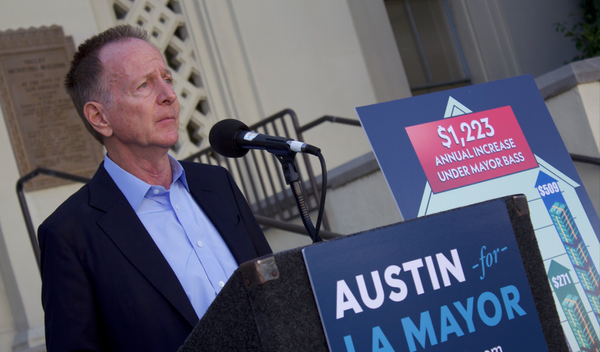
Whether you’re an advocate of full-time in-office work or complete flexibility, we can all agree that decreasing employee engagement is a profit killer. A recent survey by McKinsey reveals the staggering cost of disengagement. A mid-size S&P 500 company risks losing between $228 million and $355 million annually due to low engagement. Over a span of five years, this sums up to a potential loss of $1.1 billion per company.
In recent months, return-to-office mandates have been a key driver of worker disengagement. After trending up from 35% to 36% in 2020, employee engagement in the U.S. dropped to 34% in 2021 and 32% in 2022. Gallup found in its 2022 assessment of employee engagement.
Gallup’s findings show that employees who work remotely or on a hybrid schedule have 37% engagement, compared to those who work exclusively on-site, of whom only 29% are engaged. Additionally, employees whose jobs can be done remotely but work fully on-site were found to be drastically less engaged than remote-capable employees with location flexibility.
McKinsey’s data analysis reached the same outcomes. According to McKinsey, the core drivers of disengagement include inadequate compensation, lack of meaningful work, and inflexibility in the workplace.
The disengagement spectrum
It’s expensive to fix compensation and difficult to convince people that their jobs are meaningful if they already don’t feel they’re meaningful–putting two of the three key factors identified by McKinsey out of reach. However, both McKinsey and Gallup identified offering flexibility as a key differentiator.
More specifically, employees fall into six distinct categories on the (dis)satisfaction spectrum:
- Thriving stars (4%): These top performers prefer fully remote or hybrid models for optimal work-life integration. They are highly self-driven and value autonomy. Forced RTO disrupts their adaptability, negatively impacting their motivation, productivity, and work-life balance. They may start looking elsewhere if not given flexibility.
- Reliable and committed (38%): This core organizational group dislikes fully remote work but thrives under a hybrid model. For them, moderate in-office time maintains connection while remote work enables productivity. While willing to come in, mandated full-time office work strains their work-life balance, lowering motivation.
- Double-dippers (5%): Many in this group secretly hold multiple jobs and depend on remote work to make double-dipping feasible. Forced RTO eliminates the ability to work a second job, negatively impacting this group. They are split between engaged and disengaged, but mandatory office presence pushes them toward disengagement.
- Mildly disengaged (32%): While not as outwardly opposed to RTOs as the disruptors, this large group was demotivated by being forced to come in. They value flexibility and autonomy. Mandatory office presence made them feel micromanaged, further disengaging them. Allowing hybrid or fully remote work is crucial for re-engaging this group.
- Disruptors (11%): This actively disengaged group was the most vocal against RTO mandates, seeing it as an infringement on their autonomy and an unnecessary hassle. Forced in-office work further disgruntled this group and fueled their disengagement. Making them come back full-time would likely increase turnover among the disruptors.
- Quitters (10%): Mandatory return-to-office policies hasten the departure of the quitters, a group comprised of disengaged and mostly high performers feeling undervalued. Forced on-site work removes the location flexibility these employees desire, making them feel micromanaged. Top talent offered positions elsewhere will likely depart rather than lose autonomy. Retaining valued quitters requires proactive efforts to convey their importance through competitive pay, career development, and work-life balance flexibility before counteroffers become necessary. Overall, mandated office presence fuels quitters' belief that they can find better opportunities elsewhere, pushing talented employees already prone to leaving out the door even faster.
When working with clients to help them figure out their flexible work models, I saw the biggest impact of flexibility coming from the top and bottom parts of this spectrum. By offering win-win flexible options that showed trust while ensuring accountability, thriving stars improved their performance even further. In turn, a substantial proportion of those whom managers thought were disengaged quitters or disruptors transformed into reliable and committed performers or even thriving stars.
For both McKinsey and Gallup, the data shows that the recent forced RTO mandates and their accompanying inflexibility drive down worker engagement. No wonder that so many companies have come to regret top-down RTO.
Flexibility’s inevitability–and pitfalls
If that’s the case, shouldn’t we simply offer remote work for everyone and have that fix the engagement crisis? It’s not so easy. In fact, even fully flexible companies that allow full-time remote work can struggle with employee engagement.
A thought-provoking survey by Promoleaf provides a magnifying glass to examine the intricate complexities of remote work. The study paints a candid picture: 68% of remote employees feel less connected to their coworkers, 58% believe their contributions are less visible when working remotely, and 39% feel their mental health needs are not adequately met by their organization.
Furthermore, the survey reveals that 47% of remote employees miss informal social interactions, while 42% believe that collaboration and brainstorming with colleagues is more challenging in a remote setup. The data also shows that 36% feel that building relationships with coworkers is more difficult when working remotely.
Unlocking the potential of employee engagement in remote work is much like solving a Rubik's Cube–it requires a multifaceted approach.
By leveraging digital platforms to recognize accomplishments, we can ensure that the contributions of the 58% of employees who feel invisible are illuminated and celebrated. Regular virtual town halls, employee spotlight features, and recognition in company newsletters can make employees feel valued and seen.
The Promoleaf survey also highlights the importance of fostering a sense of community to dissolve the sense of isolation felt by 68% of remote workers.
It’s equally concerning that 39% of remote employees feel their mental health needs are overlooked. By offering mental health resources such as wellness programs and virtual therapy options, and promoting a culture that prioritizes well-being, we can cultivate an environment that truly supports employees' holistic health.
As research makes clear, substantial flexibility is the sine qua non for employee engagement. Yet while necessary, it’s not sufficient and won’t offer a simple quick fix.
We need to address the other tangible barriers to employee engagement: boost recognition, build community, improve mental health, and facilitate collaboration. These are the building blocks of the sacrosanct “culture” that many leaders want to protect by returning to the office. However, a top-down, forced return to the office undermines culture by destroying employee engagement. By using evidence-based techniques to solve the tangible problems of employee engagement in a flexible setting, companies can cultivate a thriving culture and boost employee engagement at the same time.
Gleb Tsipursky, Ph.D. (a.k.a. “the office whisperer”), helps tech and finance industry executives drive collaboration, innovation, and retention in hybrid work. He serves as the CEO of the boutique future-of-work consultancy Disaster Avoidance Experts. He is the bestselling author of seven books, including Never Go With Your Gut and Leading Hybrid and Remote Teams. His expertise comes from over 20 years of consulting for Fortune 500 companies from Aflac to Xerox and over 15 years in academia as a behavioral scientist at UNC–Chapel Hill and Ohio State.
More must-read commentary published by Fortune:
- Indeed CEO: ‘AI is changing the way we find jobs and how we work. People like me should not be alone in making decisions that affect millions’
- Why critics love to hate Elon Musk–and why his fans adore him
- Burnout is attacking our brains and making it harder to excel at work. ‘Deliberate calm’ can help us adapt
- The U.S.-China trade war is counterproductive–and the Huawei P60’s chip is just one of its many unforeseen ramifications
The opinions expressed in Fortune.com commentary pieces are solely the views of their authors and do not necessarily reflect the opinions and beliefs of Fortune.







